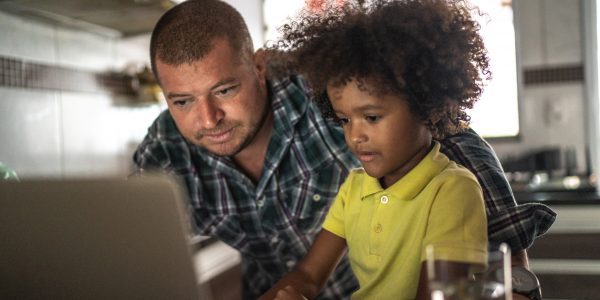-
Professor Simeon YatesUniversity of Liverpool
-
Professor Alex SingletonUniversity of Liverpool
-
Dr Supriya GarikipatiUniversity of Liverpool
-
Abigail DavisLoughborough University
-
Matt PadleyLoughborough University
-
Katherine HillLoughborough University
Project overview
Digital inequalities in access, skills, and capabilities impact all aspects of citizens’ lives, be that work, education, leisure, health, or wellbeing. The team will undertake a ‘proof of concept’ study capitalising on the well-established Minimum Income Standard (MIS) methodology to develop a Minimum Digital Living Standard (MDLS) for households with children. This will capture the minimum basket of digital goods, skills and services households need in order to have an adequate quality of life and participate in society. Through employing a participatory approach, the team will develop a framework that encapsulates digital needs and explores the implications of not having these. The project seeks to move digital inclusion policy and research debates beyond simple measures of access and skills.
Drawing on previous literature reviews and evidence from ongoing MIS research, development of the MDLS will adapt the consensus-based methodology used to devise MIS. Four rounds of deliberative focus groups will be undertaken in stages:
- consideration of what it means to be digitally included, and construction of case studies;
- identification of the digital goods, skills and services needed in case study households;
- ‘checkback’ to identify missing/ unnecessary items;
- final review of the list and reflection.
Focus groups will comprise 8-10 purposively sampled participants who are demographically similar but socio-economically different and will take place in urban areas across the UK.
A UK-wide survey will then operationalise MDLS to assess links with social, economic, cultural and digital factors. Face-to-face interviews will be carried out with a quota sample of 1500, selected to be representative of the UK population of families with children. The survey data, along with other relevant secondary data, would be integrated into a geodemographic. This geographic model of how these issues combine will be used to produce estimated rates of the MDLS for local areas (Lower Super Output Area / Data Zone level). These would be complemented by other measures, such as data on broadband provision and access to local training. This data will be presented as a PDF ‘Mapbook’, hosted on a frequently used national portal.
To understand variation in needs, the specific challenges in meeting, and the consequences of not meeting, the MDLS, for certain groups, the team will consult with representatives of families who are disadvantaged as a result of various non-exclusive factors like disability, ethnicity and poverty.
A final work strand, led by Good Things Foundation, will organise a programme of engagement events, presentations, and policy briefings. These will help to test the usefulness of MDLS as a tool for engaging, informing, and influencing policy and practice. The team will monitor engagement to assess the usefulness of MDLS.
Update
£99,203 in additional funding has been awarded to enable the project team to undertake three additional activities:
- Expanding MDLS to cover single and couple working-age households without children and single and couple older households.
- Reviewing MDLS for households with children to determine if there has been change over the last two years.
- Conducting additional dissemination, including through online workshops, presentations, and briefings to key stakeholders.






































